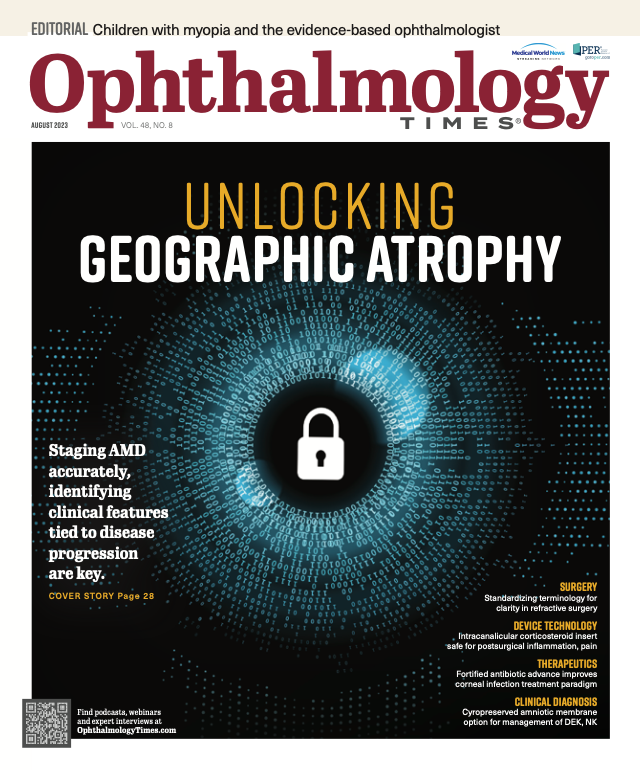- COVID-19
- Biosimilars
- Cataract Therapeutics
- DME
- Gene Therapy
- Workplace
- Ptosis
- Optic Relief
- Imaging
- Geographic Atrophy
- AMD
- Presbyopia
- Ocular Surface Disease
- Practice Management
- Pediatrics
- Surgery
- Therapeutics
- Optometry
- Retina
- Cataract
- Pharmacy
- IOL
- Dry Eye
- Understanding Antibiotic Resistance
- Refractive
- Cornea
- Glaucoma
- OCT
- Ocular Allergy
- Clinical Diagnosis
- Technology
Pearls for incorporating phakic IOLs into your practice
Surgeons can refine their workflow, partner with an optometrist.
(Image Credit: AdobeStock/Mohammed)

Phakic IOL surgery now makes up nearly 20% of refractive surgery procedures in my comprehensive anterior segment practice. Its growing role is due in part to patients’ reactions: It is not uncommon to see patients crying with joy and exclaiming that they have never been able to see as well as they can after surgery. In addition, phakic IOL technology, my sizing technique, and the way we approach this option in our practice have all evolved considerably in the past few years, setting the stage for wider use.
First, the latest iteration of the implantable collamer lens (ICL), the EVO ICL (STAAR Surgical), has a new 360-µm central port that has increased safety. The central port allows for a steady flow of aqueous through the lens and passive removal of viscoelastics, eliminating the need for peripheral iridotomies (PIs) and reducing the risk of pupillary block. In the past, PIs would often bleed or cause glare. They could be unpleasant for the patient, and there was always the risk of the PI closing and causing a pressure spike during the early postoperative period because of iris dynamics. A review of more than 4000 eyes implanted with this lens showed very low rates of complications, including a 0% incidence of anterior subcapsular cataract, 0.04% incidence of pupillary block, 0% incidence of pigment dispersion, and 0.47% rate of secondary surgical interventions.1
Patient selection
For some patients, a phakic IOL is the only suitable refractive option. Seeing a patient with –15 D of myopia and 3.5 D of astigmatism become spectacle free is certainly inspiring! But the ICL is not a procedure I reserve only for extreme cases. We present it as an option to all our patients with refractive error for whom the spherical portion of the manifest refraction is at least –2.5 D (corresponding to the lowest available ICL power of 3 D), and I implant many ICLs in patients with 4 to 6 D of myopia. The conversation has evolved from “You’re not a candidate for LASIK [laser in situ keratomileusis], but we have another option for you” to “Great news; you are a candidate for LASIK, PRK [photorefractive keratectomy], or ICL.”
We have found that patients like the idea of a reversible surgery that is less likely to exacerbate dry eye—a nearly ubiquitous condition in the high-elevation and low-humidity environment of Denver, Colorado. I am quick to rule out LASIK for suspicious topography or significant dry eye, and these patients who are not candidates for LASIK increasingly choose phakic IOL surgery. Compared with PRK, it offers faster healing and visual recovery with less discomfort.
Sizing the ICL
The EVO ICL is available in 4 diameter sizes: 12.1, 12.6, 13.2, or 13.7 mm. Choosing the correct size is very important. A lens that is too large can result in a shallow vault and an emergency call for very high IOP. If it is too small, the phakic lens may be too close to the crystalline lens.
The traditional method for sizing ICL lenses relies on caliper measurements of the horizontal white-to-white (WTW) corneal diameter and anterior chamber depth to calculate lens power and size via the manufacturer’s Online Calculation and Ordering System.2 Other methods that have been described in the literature include angle-to-angle distance using optical coherence tomography3,4 and sulcus-to-sulcus (STS) distance using ultrasound biomicroscopy (UBM).5,6 When I first began performing ICL surgery, I found it difficult to determine the best size to achieve the desired vault with the WTW method, which I felt didn’t always accurately reflect the internal measurements of the eye.
Although surgeons have gotten excellent results with all these methods, my comfort with the procedure increased dramatically when I began using the STS method instead of the WTW method. I use the Insight 100 UBM device (ArcScan) to obtain a series of measurements that I enter into the ICL Sizing Calculator Version 1.1, a website created by Dan Reinstein, MD. The online calculator shows me the predicted vault with each ICL size so that I can decide which is safest for the patient. When an eye is between 2 sizes of lenses, I typically choose the smaller-diameter lens. With the EVO models, I’m much less worried about undersizing because fluid from behind the ICL flows slowly through the openings, essentially floating the ICL away from the crystalline lens. As a result, my vaults with the EVO ICLs are more generous than those with the same size of Visian ICL.
Workflow
Surgeons just beginning to implant phakic ICLs need to allow some time to figure out how to best schedule these cases. Typically, the entry point to the refractive surgery workflow is the free LASIK consultation. However, the preoperative requirements for an ICL have more in common with a cataract surgery work-up than a LASIK work-up. Instead of scheduling surgery at the conclusion of the refractive consultation, we typically have candidates for ICL come back for another preoperative visit 5 to 7 days later. This ensures they are not wearing their contact lenses for a week and gives us time to obtain all necessary measurements.
I highly recommend hiring an optometrist with a strong interest in refractive surgery to conduct vision correction consultations, because that can free up a great deal of the surgeon’s time while still efficiently guiding patients to the best procedure. I have also done a lot of continuing education for community optometrists. Over time, both referring physicians and our internal optometrists have become more confident in the ICL safety profile, outcomes, and patient experience—to the point that they are now enthusiastic about offering or recommending ICL surgery to patients across the spectrum, from those with moderate myopia to those with severe astigmatism and amblyopia.

Eva Kim, MD
E: eva.kim@iconeyecare.com
Kim is medical director and vice president of operations for ICON Eyecare in Denver, Colorado. She is a consultant for STAAR Surgical.
References:
Packer M. The implantable collamer lens with a central port: review of the literature. Clin Ophthalmol. 2018;12:2427-2438. doi:10.2147/OPTH.S188785
Packer M. Evaluation of the EVO/EVO+ sphere and toric Visian ICL: six month results from the United States Food and Drug Administration clinical trial. Clin Ophthalmol. 2022;16:1541-1553. doi:10.2147/OPTH.S369467
Kim T, Kim SJ, Lee BY, et al. Development of an implantable collamer lens sizing model: a retrospective study using ANTERION swept-source optical coherence tomography and a literature review. BMC Ophthalmol. 2023;23(1):59. doi:10.1186/s12886-023-02814-7
Rocamora L, Orlando JI, Lwowski C, Kohnen T, Mertens E, Van Keer K. Postoperative vault prediction for phakic implantable collamer lens surgery: LASSO formulas. J Cataract Refract Surg. 2023;49(2):126-132. doi:10.1097/j.jcrs.0000000000001079
Kojima T, Yokoyama S, Ito M, et al. Optimization of an implantable collamer lens sizing method using high-frequency ultrasound biomicroscopy. Am J Ophthalmol. 2012;153(4):632-637.el. doi:10.1016/j.ajo.2011.06.031
Reinstein DZ, Archer TJ, Vida RS, Piparia V, Potter JG. New sizing parameters and model for predicting postoperative vault for the implantable collamer lens posterior chamber phakic intraocular lens. J Refract Surg. 2022;38

